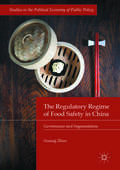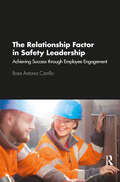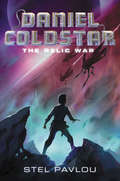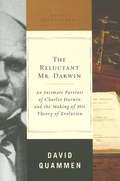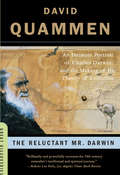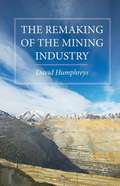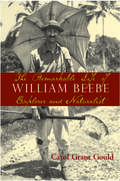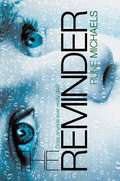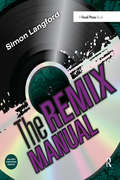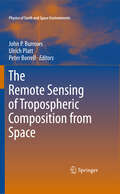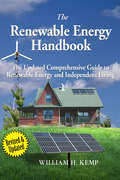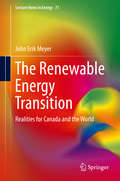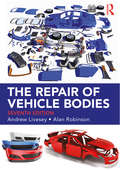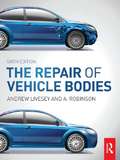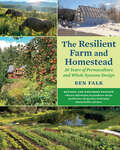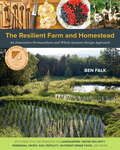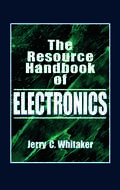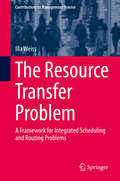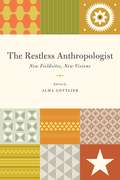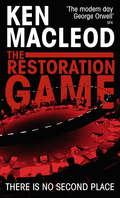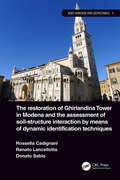- Table View
- List View
The Regulatory Regime of Food Safety in China
by Guanqi ZhouThis book examines the decade from 2004 to 2013 during which people in China witnessed both a skyrocketing number of food safety crises, and aggregating regulatory initiatives attempting to control these crises. Multiple cycles of "crisis - regulatory efforts" indicated the systemic failure of this food safety regime. The book explains this failure in the "social foundations" for the regulatory governance of food safety. It locates the proximate causes in the regulatory segmentation, which is supported by the differential impacts of the food regulatory regime on various consumer groups. The approach of regulatory segmentation does not only explain the failure of the food safety regime by digging out its social foundation, but is also crucial to the understanding of the regulatory state in China.
The Regulator–Regulatee Relationship in High-Hazard Industry Sectors: New Actors and New Viewpoints in a Conservative Landscape (SpringerBriefs in Applied Sciences and Technology)
by Benoît Journé Jean-Christophe Le CozeThis open access book addresses relationships that develop from the complex set of legislative, regulatory, and institutional arrangements that arise in the governance of high-hazard industries, especially those connected with safety. It analyses the difference in practices between high-hazard sectors such as nuclear power, chemical processing, and transport with those in the finance and healthcare sectors. The relationship between regulating and regulated entities is important in ensuring that safety is not subordinated to other concerns and in maintaining public confidence. As a result, the brief addresses various pressures and trade-offs inherent in that relationship, trade-offs between such considerations as: cost of the oversight activity and its effectiveness; regulator independence and its level of competency and understanding of the risks involved; ability to provide advice on meeting regulatory goals and being able to criticize decisions made; and effectiveness and intrusion in operational activities. The contributors show how, over time, a more horizontal or “decentred” approach to regulatory oversight has appeared, with a larger degree of delegation of certain decisions to industry and a greater role for a range of third parties such as certification bodies, auditors, insurers, industry associations and NGOs. This book is of interest to academics working in the fields of safety science or organizational management and to practitioners, regulators and policy-makers concerned with health and safety and critical infrastructure.
The Relationship Factor in Safety Leadership: Achieving Success through Employee Engagement
by Rosa Antonia CarrilloAt the core of The Relationship Factor in Safety Leadership are eight beliefs about human nature that are common to leaders who successfully communicate that safety is important while meeting business results. Using stories and business language the book explains how to create and recover important stakeholder relationships by setting priorities and taking action based on these beliefs. The beliefs are based on the author’s 25 years of experience supporting operational and safety leaders with successful and unsuccessful change efforts in pharmaceutical, nuclear, mining, manufacturing and power generation. The author also offers compelling evidence from many social and scientific disciplines that support the conclusion that satisfying our need for relationship is a major motivator. The Five Orientations Model offers a perspective on solving complex problems when confronted with multiple demands. The book provides managers and supervisors with the motivation to build relationships and points to the conditions needed for success. It also describes a process to take united action but retain the flexibility to change course as necessary. The book is written for managers and leaders, at all levels, concerned with occupational health and safety, and wishing to learn how to leverage relationships to achieve higher employee engagement and performance.
The Relevance of René Thom: The Morphological Dimension in Today’s Sciences (Lecture Notes in Morphogenesis)
by Isabel Marcos Clément MorierThe body of work presented in this book comes from research carried out since 2017 as part of the international "Actualité de René Thom" project. This project was initially entitled "Morphology and qualitative dynamics: Knowledge of forms / Forms of knowledge". Subsequently, the name "Relevance of René Thom" was chosen for its clarity and evocative power.The aim of this research project is to promote the scientific relevance of René Thom's thinking on forms, and to demonstrate the importance of his method and discoveries. It is based on discussions of Thom's thinking and the method he proposes - i.e., to seek out dynamic structures in order to understand changes of form in nature and at the human-social level, to explain the transformation of these dynamic forms, to study the morphologies of process in various fields in order to advance scientific knowledge...The relevance of this thinker has manifested itself in the form of monthly sessions of a research seminar, held from 2017 to 2022, as well as in the form of international congresses (2018, 2019), bringing together the greatest friends and continuators, both of the work of René Thom himself, and of reflection on morphogenetic dynamics in the most diverse disciplines. This created a space for dialogue and listening between the exact sciences and the social and human sciences. Indeed, the fields of study are necessarily interdisciplinary, since, as René Thom teaches us, morphological organization, or form, in its exchanges with matter, must be considered as "independent" of its substrate, i.e. the environment in which this morphogenesis unfolds. Finally, this book marks a symbolic moment: it takes shape in the year that marks the centenary of the birth of René Thom, who was born in the French town of Montbéliard in 1923. To mark this centenary (1923-2023), a number of initiatives have been launched to celebrate the discoveries and advances of this mathematician-philosopher, ashe liked to call himself… The publication of the present book is one more, which we hope will shed light that will stimulate the morphological gaze Thom so urged us to adopt.
The Relic War (Daniel Coldstar #1)
by Stel PavlouAn epic and funny outer space adventure from acclaimed science fiction author and screenwriter Stel Pavlou! <P><P>Below the surface on a forgotten planet, Daniel Coldstar searches for relics from a lost civilization. Daniel has no memory of his past. All he knows is to do his job and fear the masters of the mines.Until he unearths a relic more powerful than anything he has ever seen. A relic that might help him escape…What follows is an epic outer space adventure filled with Truth Seekers, anatoms, Leechers, and the evil Sinja who seek to control the universe. <P><P>All that stands in their way is a boy named Daniel Coldstar, whose journey will change the galaxy forever.
The Reluctant Mr. Darwin: An Intimate Portrait of Charles Darwin and the Making of His Theory of Evolution
by David QuammenHe did not found a movement or a religion says Montana-based writer of fiction and natural history Quammen, he never assembled a creed of scientific axioms and ascribed his name to them. He was in fact a reclusive biologist who wrote books on some minor and some major topics, made mistakes, and changed his mind. He admits that most of Darwin's writings relate to the unity of all life as reflected in the processes of evolution, but he had nothing to do with Darwinism and its scientific and religious controversies.
The Reluctant Mr. Darwin: An Intimate Portrait of Charles Darwin and the Making of His Theory of Evolution (Great Discoveries)
by David Quammen"Quammen brilliantly and powerfully re-creates the 19th century naturalist's intellectual and spiritual journey."--Los Angeles Times Book Review Twenty-one years passed between Charles Darwin's epiphany that "natural selection" formed the basis of evolution and the scientist's publication of On the Origin of Species. Why did Darwin delay, and what happened during the course of those two decades? The human drama and scientific basis of these years constitute a fascinating, tangled tale that elucidates the character of a cautious naturalist who initiated an intellectual revolution.
The Remaking of the Mining Industry
by David HumphreysThe emergence of China as a major economic power in the first decade of the millennium prompted the biggest commodity boom of modern times. Soaring prices gave rise to talk of a commodity 'super cycle' and induced a wave of resource nationalism in mineral-rich countries. It also stirred up concerns of supply shortages in mineral-consuming countries. The author, who served as chief economist at two of the world's largest mining companies during these years, describes how and why this resulted in a transformation – a 'remaking' – of the mining industry. The book tells of how the markets in which the industry operated changed, how the industry was restructured through acquisition and investment, and how a cast of new players from emerging economies arrived on the scene. With the boom now passed, the book concludes with some reflections on what the changes imply for the future of the industry and the environmental and political challenges it will face
The Remarkable Life of William Beebe: Explorer And Naturalist
by Carol Grant GouldWhen William Beebe needed to know what was going on in the depths of the ocean, he had himself lowered a half-mile down in a four-foot steel sphere to see-five times deeper than anyone had ever gone in the 1930s. When he wanted to trace the evolution of pheasants in 1910, he trekked on foot through the mountains and jungles of the Far East to locate every species. To decipher the complex ecology of the tropics, he studied the interactions of every creature and plant in a small area from the top down, setting the emerging field of tropical ecology into dynamic motion.William Beebe's curiosity about the natural world was insatiable, and he did nothing by halves. As the first biographer to see the letters and private journals Beebe kept from 1887 until his death in 1962, science writer Carol Grant Gould brings the life and times of this groundbreaking scientist and explorer compellingly to light.From the Galapagos Islands to the jungles of British Guiana, from the Bronx Zoo to the deep seas, Beebe's biography is a riveting adventure. A best-selling author in his own time, Beebe was a fearless explorer and thoughtful scientist who put his life on the line in pursuit of knowledge. The unique glimpses he provided into the complex web of interactions that keeps the earth alive and breathing have inspired generations of conservationists and ecologists. This exciting biography of a great naturalist brings William Beebe at last to the recognition he deserves.
The Reminder
by Rune MichaelsDaisy, otherwise known as Daze, keeps hearing her dead mother's voice. Sometimes it's because of her dad, who likes to watch old home movies when he can't sleep. Sometimes it's because of her brother, who was too young to remember Mom, and needs to be reminded by looking at photographs and watching videos. Sometimes it might just be her mind trying to work out what her therapist would call "issues." But this time, it is none of those things. It's something much more wonderful and much more terrifying, something Daze never thought possible. And it might allow Daze to do what she couldn't years ago: save her mother's life. Rune Michaels, the visionary author of Genesis Alpha, plunges headfirst into the waters where science, family, and memory meet, and emerges with a powerful and fascinating story about loss and survival that challenges everything we think we know about the people we love.
The Remix Manual: The Art and Science of Dance Music Remixing with Logic
by Simon LangfordFirst published in 2011. Routledge is an imprint of Taylor & Francis, an informa company.
The Remote Sensing of Tropospheric Composition from Space
by John P. Burrows Peter Borrell Ulrich PlattThe impact of anthropogenic activities on our atmospheric environment is of growing public concern and satellite-based techniques now provide an essential component of observational strategies on regional and global scales. The purpose of this book is to summarise the state of the art in the field in general, while describing both key techniques and findings in particular. It opens with an historical perspective of the field together with the basic principles of remote sensing from space. Three chapters follow on the techniques and on the solutions to the problems associated with the various spectral regions in which observations are made. The particular challenges posed by aerosols and clouds are covered in the next two chapters. Of special importance is the accuracy and reliability of remote sensing data and these issues are covered in a chapter on validation. The final section of the book is concerned with the exploitation of data, with chapters on observational aspects, which includes both individual and synergistic studies, and on the comparison of global and regional observations with chemical transport and climate models and the added value that the interaction brings to both. The book concludes with scientific needs and likely future developments in the field, and the necessary actions to be taken if we are to have the global observation system that the Earth needs in its present, deteriorating state. The appendices provide a comprehensive list of satellite instruments, global representations of some ancillary data such as fire counts and light pollution, a list of abbreviations and acronyms, and a set of colourful timelines indicating the satellite coverage of tropospheric composition in the foreseeable future. Altogether, this book will be a timely reference and overview for anyone working at the interface of environmental, atmospheric and space sciences.
The Renaissance of Renewable Energy
by Gian Andrea Pagnoni Stephen RocheThis book provides detailed yet easily understandable information about sustainable energy alternatives in the context of growing public concern about climate change, the impending fuel crisis and environmental degradation. It deals with the history of energy use and the factors that have led to the current interest in energy alternatives and assesses the chance of renewable energy replacing fossil fuels in the future. The authors manage to make a highly complex and often intimidating subject not only accessible but also engaging and entertaining. This book unpacks but never simplifies the science of energy, leavening the more technical passages with anecdotes, metaphors, examples and imagery. By also dealing with the history, politics and economics of energy use, it offers both scientific and non-scientific readers a deeper understanding of the most important issue of our age.
The Renewable Energy Handbook, Revised Edition in Colour
by William H. KempThis revised edition of The Renewable Energy Handbook focuses on the unique requirements of off-grid living as well as using "green" energy for homeowners who remain connected to the electrical utility. The book contains chapters on: Energy efficiency and economics Home heating and cooling and domestic water heating Photovoltaic, wind, and micro-hydro energy generation Battery selection and inverters Backup power, wireless communications, etc. It includes comprehensive specifications for many of the products available in the market today.Whether you are just curious or an industry expert, this handbook will show you how to stretch your energy dollars (doing much more with less) while powering your home with renewable energy. And, unlike fossil fuels or nuclear energy, renewable energy frees you from worry about dumping today's pollution on tomorrow's children.Since its release in 2003, The Renewable Energy Handbook has been a top-selling technology book and is recognized as the best in its field.This edition has been fully revised for 2010 and beyond. It has been increased in size to an easy-to-read 8 x 10 inch format, and it is augmented with hundreds of illustrations, line drawings, photographs, and appendices.Author/engineer William H. Kemp is a leading expert in renewable energy technologies. He and his wife designed and built their own off-grid home, which has all the standard middle-class creature comforts while using no fossil-fuel energy. The author showcases an assortment of homes, including his own, to demonstrate real-world application of the technologies.
The Renewable Energy Transition: Realities for Canada and the World (Lecture Notes in Energy #71)
by John Erik MeyerCanada is a well-endowed country that serves as an ideal model to lead the reader through the development of energy, resources, and society historically and into a post-carbon future. The book provides an historical perspective and describes the physical resource limitations, energy budgets, and climate realities that will determine the potential for any transition to renewable energy. Political and social realities, including jurisdiction and energy equality issues, are addressed. However, we cannot simply mandate or legislate policies according to social and political aspirations. Policies must comply with the realities of physical laws, such as the energy return on investment (EROI) for fossil-fuel based and renewable energy systems. EROI is discussed in both historical terms and in reference to the greater efficiencies inherent in a distributed generation, mainly electric, post-carbon society. Meyer explores the often misleading concepts and terms that have become embedded in society and tend to dictate our policy making, as well as the language, social and personal goals, and metrics that need to change before the physical transition can begin at the required scale. This book also reviews what nations have been doing thus far in terms of renewables, including the successes and failures in Canada and across the globe. Ontario’s green energy fiasco, and a comparison of the different circumstances of Norway and Alberta, for example, are covered as part of the author’s comparison of a wide range of countries. What are the achievements, plans, and problems that determine how well different countries are positioned to make “the transition”? The transition path is complex, and the tools we need to develop and the physical infrastructure investments we need to make, are daunting. At some point in time, Canada and Canadians, like all nations, will be living on 100% renewable energy. Whether the social and technological level that endures sees us travelling to the stars, or subsisting at a standard of living more similar to the pre-fossil fuel era, is far from certain.
The Repair of Vehicle Bodies (Seventh Edition)
by Alan Robinson Andrew Livesey<p>This revised and updated seventh edition of the best-selling reference manual on vehicle body repair brings the book up to date for the current body repair trade. It serves as a comprehensive guide covering the vocationally related qualification (VRQ) required by the modern student and apprentice, as well as providing the CPD essential for all working professionals. The entire book is overhauled to reflect current industry trends with regards to materials, processes and procedures. <p>This book not only provides the knowledge and skills for body repair, it helps to develop a real understanding of the how and why behind this information. It will be essential for anyone studying Levels 1–3 Vehicle Body Repair, Vehicle Refinishing and MET courses, including the new apprenticeships and technical certificates from the IMI, Pearson-BTEC and C&G. HNC and degree Automotive Engineering students will find the text valuable to develop skills and knowledge for practical project work. Industry professionals, vehicle restorers and car DIY enthusiasts will continue to find it an essential and comprehensive source of information.</p>
The Repair of Vehicle Bodies, 6th ed
by Andrew Livesey A RobinsonThis book covers the principles and techniques that will help you develop the skills needed to carry out effective vehicle body repair and re-finishing. This edition has been updated to deal with changes in technology and best practice and meets the current Automotive Skills standards. It also covers the topics studied at NVQ levels 2 and 3 and contains handy revision notes making it an ideal text for students on the following courses: Automotive Skills Council Vehicle Body and Paint Operations requirements IMI Body Repair and Refinishing Technical Certificates (VRQs) National Vocational Qualifications (NVQs) City & Guilds Vehicle Body Repair Competence courses NVQ and Progression Awards of both City & Guilds and the Institute of the Motor Industry at levels 2 and 3. Professionals and hobbyists will continue to find this an essential manual for the workshop when repairing the latest models or classic cars. Other books by Andrew Livesey: Basic Motorsport Engineering 9780750689090Advanced Motorsport Engineering 9780750689083
The Rescue Mission (Tom Swift, #6)
by Victor AppletonTom and his friends find themselves in the hands of unfriendly robots who are trying to eliminate all biological life from their planet.
The Resilient Farm and Homestead, Revised and Expanded Edition: A Permaculture and Whole Systems Design Approach
by Ben Falk&“This is one of the most practical, down-to-earth, dirt-under-the-fingernails, comprehensive explanations of all things homesteading and small farming. Whether you&’re just dreaming or an old hand, Ben Falk&’s longer experience horizon is invaluable.&”—Joel Salatin, cofounder, Polyface Farm; author of Everything I Want to Do Is IllegalInformed by twenty years of successful land management and the professional design experience of his pioneering firm Whole Systems Design, LLC, author Ben Falk updates his classic text and delivers the definitive twenty-first century systems thinking manual in self-reliance—sure to empower readers to prioritize projects, make positive lifestyle decisions, and take strategic steps toward a regenerative future. In The Resilient Farm and Homestead, Revised and Expanded Edition Falk describes how he has transformed a degraded hillside in the frigid Vermont climate into a thriving, biodiverse Eden that now provides year-round abundance for his family and community.First published in 2013, The Resilient Farm and Homestead is a comprehensive how-to guide for building durable and productive land-based systems through the reciprocal interplay of humans and the natural world. In the ten years since he first published this seminal work, Falk has deepened his wisdom in harnessing nature-based solutions for increasingly challenging times, including addressing severe climate disruptions like drought and flood conditions.The book covers every strategy Falk and his team have tested on the Whole Systems Research Farms over the past two decades and includes detailed information on earthworks, gravity-fed water systems, soil fertility management, growing nutrient-dense food and medicine, fuelwood production, agroforestry, managed grazing, and much more.Complete with full-color photography and detailed design drawings, The Resilient Farm and Homestead, Revised and Expanded Edition includes new information on:Designing greenhouses and microclimatesReinvigorating human health and embodying a vigorous lifestyleRaising children on a homesteadCreating failure-proof and resilient energy systemsFocusing on permaculture beekeepingCultivating proven cold climate plantsOvercoming analysis paralysis and mastering the art of knowing where to start and when to take strategic risksAnd much, much more!In an age that feels defined by disconnection, disease, and decline, The Resilient Farm and Homestead, Revised and Expanded Edition offers a roadmap to conquering uncertainty, maximizing efficiency, and creating a bountiful, manageable landscape that will endure.&“Essential reading for the serious prepper as well as for everyone interested in creating a more resilient lifestyle.&”—Carol Deppe, author of The Resilient Gardener&“This intelligent, challenging book, rooted somewhere between back-to-the-land idealism and radical survivalism, sees resilience as both planting and building for the use of future generations, but also as preparing food, water, shelter, and the human body and psyche for the onset of any imaginable extreme emergency. . . . The result is a comprehensive, open-ended, theoretical and practical system for a post-carbon-dependent life.&”—Publishers Weekly (starred review of first edition)
The Resilient Farm and Homestead: An Innovative Permaculture and Whole Systems Design Approach
by Ben FalkA practical, comprehensive, and essential how-to manual with information on growing perennial crops, soil fertility, water security, nutrient dense food, and more! "Essential reading for the serious prepper as well as for everyone interested in creating a more resilient lifestyle."—Carol Deppe, author of The Resilient GardenerThe Resilient Farm and Homestead is for readers ready to not just survive, but thrive in changing, unpredictable times. It offers the tools to develop durable, beautiful, and highly functional human habitat systems anchored by preparation, regeneration, and resiliency. Ben Falk is a land designer and site developer whose research farm has drawn national attention. The site is a terraced paradise on a hillside in Vermont that would otherwise be overlooked by conventional farmers as unworkable. Falk’s wide array of fruit trees, rice paddies (relatively unheard of in the Northeast), ducks, nuts, and earth-inspired buildings is a hopeful image for the future of regenerative agriculture and modern homesteading.The book covers nearly every strategy Falk and his team have been testing at the Whole Systems Research Farm over the past decade, as well as experiments from other sites Falk has designed through his off-farm consulting business.The book includes detailed information on:Gravity-fed water systemsFuelwood hedge production and processingHuman health through nutrient-dense production strategiesRapid topsoil formation and remineralizationAgroforestry, silvopasture & grazingEarthworksSpecies compositionThe site-design process and site managementEcosystem services, especially regarding flood mitigationTools, equipment, and appropriate technology guidesA "Homestead Vulnerability" checklistResiliency Aptitude quiz and skills list for emergencies And much more!Complete with gorgeous photography and detailed design drawings throughout!The Resilient Farm and Homestead is more than just a book of tricks and theories for regenerative site development. It offers actual working results from a complex farm-ecosystems based on research from the “great thinkers” in permaculture, and presents a viable home-scale model for an intentional food-producing ecosystem in cold climates, and beyond. Inspiring to would-be homesteaders everywhere, but especially for those who find themselves with “unlikely” farming land, Falk is an inspiration in what can be done by imitating natural systems, and making the most of what we have by re-imagining what’s possible. A gorgeous case study for the homestead of the future.
The Resource Handbook of Electronics (Electronics Handbook Series)
by Jerry C. WhitakerBuilding upon the extensive resources of Whitaker's The Electronics Handbook, The Resource Handbook of Electronics offers the most complete collection of reference and tabular data available. It provides the data that engineers and technologists need in a clear, concise format that does away with detailed explanations and presents just the facts-the essential tables, charts, formulas, definitions, and equations with just enough detail to accomplish the task at hand.This one-stop reference covers a broad range of technologies, emphasizes practical applications, and provides references to more detailed information on important subjects. Its many topics include:
The Resource Transfer Problem: A Framework For Integrated Scheduling And Routing Problems (Contributions to Management Science)
by Illa WeissThe resource transfer problem (RTP) is a modeling and solution framework for integrated complex scheduling and rich vehicle routing problems. It allows the modeling of a wide variety of scheduling problems, vehicle routing problems, their combination with integrated problems, as well as various specific requirements and restrictions arising in practical scheduling and vehicle routing. Based on the unifying resource transfer problem framework, this book proposes a generic constraint propagation approach that exploits the specific structure of scheduling and routing problems.
The Restless Anthropologist: New Fieldsites, New Visions
by Alma GottliebWhat does a move from a village in the West African rain forest to a West African community in a European city entail?a What about a shift from a Greek sheep-herding community to working with evictees and housing activists in Rome and Bangkok? aIna"The Restless Anthropologist," Alma Gottlieb brings together eight eminent scholars to recount the riveting personal and intellectual dynamics of uprooting oneOCOs lifeOCoand decades of workOCoto embrace a new fieldsite. Addressing questions of life-course, research methods, institutional support, professional networks, ethnographic models, and disciplinary paradigm shifts, the contributing writers ofa"The Restless Anthropologist"adiscuss the ways their earlier and later projects compare on both scholarly and personal levels, describing the circumstances of their choices and the motivations that have emboldened them to proceed, to become novices all over again. In doing so, they question some of the central expectations of their discipline, reimagining the space of the anthropological fieldsite at the heart of their scholarly lives. aa
The Restoration Game
by Ken MacLeod'...a video game espionage novel where MacLeod deftly mixes Eastern European intrigue with underground gamer culture to create a terrific political thriller. MacLeod is one of io9's chief muses, and his work is a big reason I fell in love with science fiction again after many years away from it' - IO9'This is a writer at the peak of his powers.' - SFXThere is no such place as Krassnia. Lucy Stone should know - she was born there. In that tiny, troubled region of the former Soviet Union, revolution is brewing. Its organisers need a safe place to meet, and where better than the virtual spaces of an online game? Lucy, who works for a start-up games company in Edinburgh, has a project that almost seems made for the job: its original inspiration came from The Krassniad - an epic tale, based on Krassnian folklore, concocted by Lucy's mother who studied there in the 1980s.As Lucy digs up details about her birthplace to slot into the game, she finds her interest in the open secrets of her family's past - and the darker secrets of Krassnia's - has not gone unnoticed. When a Russian - Georgian border war breaks out, Lucy has to move fast - and return to Krassnia herself, to the heart of the mountain that holds Krassnia's darkest and oldest secret. But nothing Lucy has discovered can possibly prepare her for the crucial role she is destined to play in The Restoration Game . . .The compelling new near-future thriller from the award-winning author of THE EXECUTION CHANNEL and THE NIGHT SESSIONS.Books by Ken MacLeod:Fall RevolutionThe Star FractionThe Stone CanalThe Cassini DivisionThe Sky RoadEngines of LightCosmonaut KeepDark LightEngine CityCorporation Wars TrilogyDissidenceInsurgenceEmergenceNovelsThe Human FrontNewton's WakeLearning the WorldThe Execution ChannelThe Restoration GameIntrusionDescent
The Restoration of Ghirlandina Tower in Modena and the Assessment of Soil-Structure Interaction by Means of Dynamic Identification Techniques (Built Heritage and Geotechnics)
by Renato Lancellotta Rosella Cadignani Sabia DonatoThis book is the first of a series of volumes on Built Heritage and Geotechnics, intended to reach a wide audience: professionals and academics in the fields of civil engineering, architecture, restoration and cultural heritage management, and even the wider public. The present volume provides essential information on the history of the construction of the Ghirlandina Tower in Modena, the techniques involved and the restoration works, and proves how the interaction with the supporting soil may explain the reasons behind the corrections that masons implemented during construction, the pattern of settlements suffered by the tower and the Cathedral and their mutual interaction. In addition to the above, there is one particular aspect that should capture the interest of a wide readership: in 1997 the Cathedral and the Ghirlandina Tower were included in the UNESCO World Heritage List, and it was recognized that the creation process shared by Lanfranco and Wiligelmo is a masterpiece of human creativity, in which a new dialectical relationship between architecture and sculpture was created in Romanesque art. The Modena complex bears exceptional witness to the cultural traditions of the 12th century in northern Italy's urban society, its organization, religious character, beliefs, and values all being reflected in the history of the buildings.
